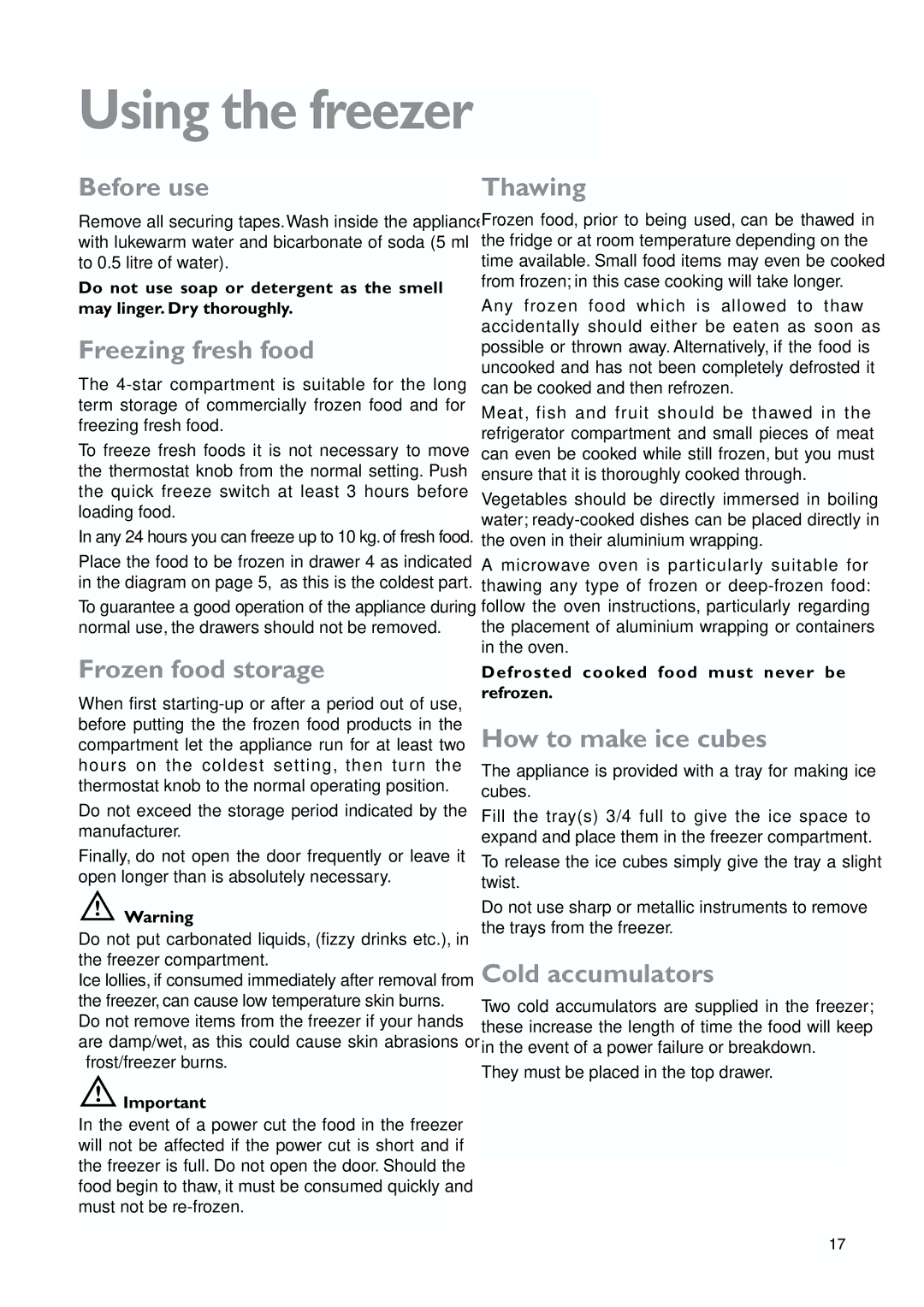
Using the freezer
Before use
Remove all securing tapes.Wash inside the appliance with lukewarm water and bicarbonate of soda (5 ml to 0.5 litre of water).
Do not use soap or detergent as the smell may linger. Dry thoroughly.
Freezing fresh food
The
To freeze fresh foods it is not necessary to move the thermostat knob from the normal setting. Push the quick freeze switch at least 3 hours before loading food.
In any 24 hours you can freeze up to 10 kg. of fresh food.
Place the food to be frozen in drawer 4 as indicated in the diagram on page 5, as this is the coldest part.
To guarantee a good operation of the appliance during normal use, the drawers should not be removed.
Frozen food storage
When first
Do not exceed the storage period indicated by the manufacturer.
Finally, do not open the door frequently or leave it open longer than is absolutely necessary.
Warning
Do not put carbonated liquids, (fizzy drinks etc.), in the freezer compartment.
Ice lollies, if consumed immediately after removal from the freezer, can cause low temperature skin burns. Do not remove items from the freezer if your hands are damp/wet, as this could cause skin abrasions or “frost/freezer burns”.
![]() Important
Important
In the event of a power cut the food in the freezer will not be affected if the power cut is short and if the freezer is full. Do not open the door. Should the food begin to thaw, it must be consumed quickly and must not be
Thawing
Frozen food, prior to being used, can be thawed in the fridge or at room temperature depending on the time available. Small food items may even be cooked from frozen; in this case cooking will take longer.
Any frozen food which is allowed to thaw accidentally should either be eaten as soon as possible or thrown away. Alternatively, if the food is uncooked and has not been completely defrosted it can be cooked and then refrozen.
Meat, fish and fruit should be thawed in the refrigerator compartment and small pieces of meat can even be cooked while still frozen, but you must ensure that it is thoroughly cooked through.
Vegetables should be directly immersed in boiling water;
A microwave oven is particularly suitable for thawing any type of frozen or
Defrosted cooked food must never be refrozen.
How to make ice cubes
The appliance is provided with a tray for making ice cubes.
Fill the tray(s) 3/4 full to give the ice space to expand and place them in the freezer compartment.
To release the ice cubes simply give the tray a slight twist.
Do not use sharp or metallic instruments to remove the trays from the freezer.
Cold accumulators
Two cold accumulators are supplied in the freezer; these increase the length of time the food will keep in the event of a power failure or breakdown.
They must be placed in the top drawer.
17
